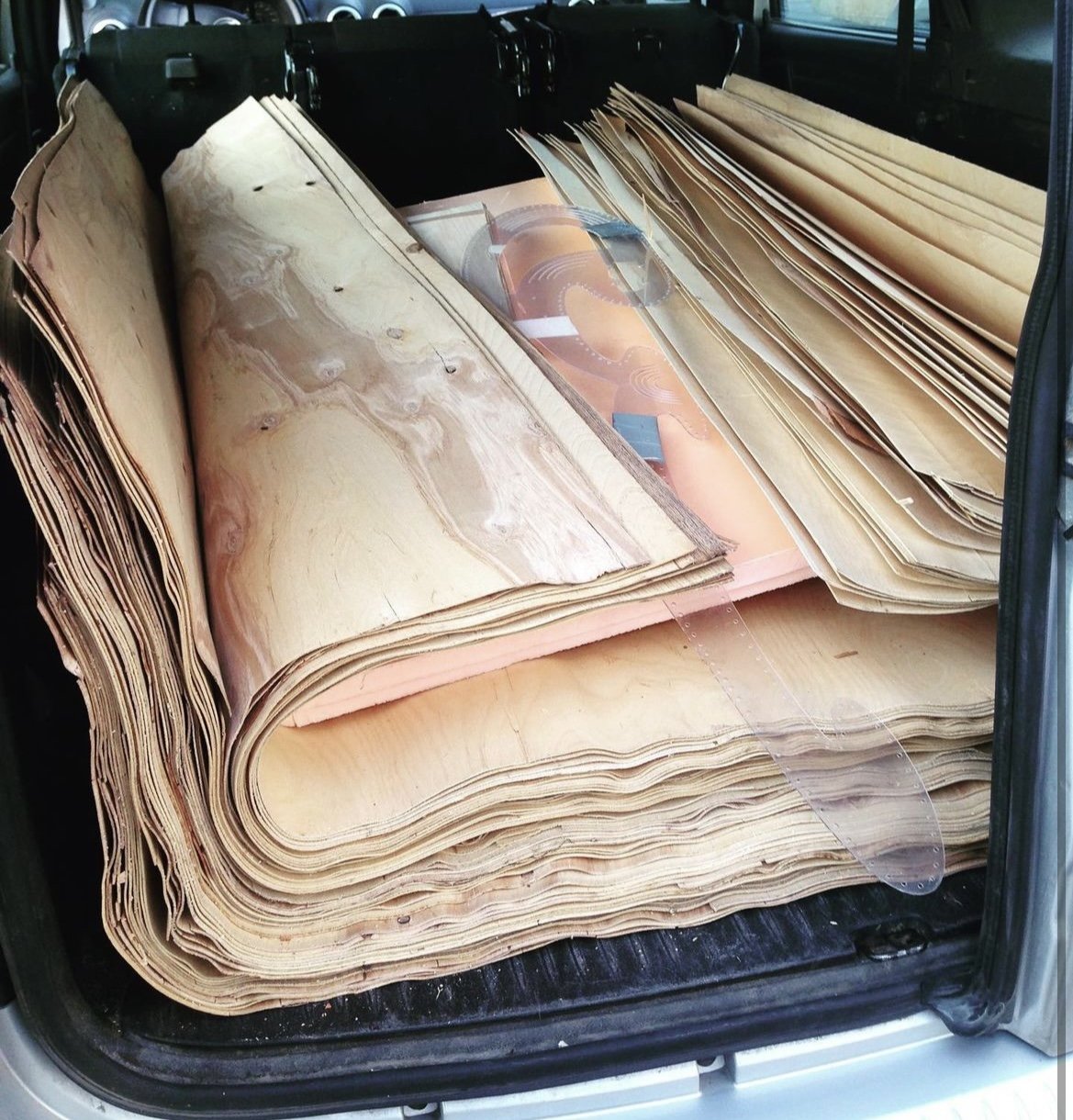Hi Denis! Tell us when and how you found out about Roarockit?
Hi! In 2014-15 I was still working at an office, but I was also into skating and came across the Roarockit website. I found the idea of vacuum bags fascinating. Many skaters develop an interest in how boards are made, which often leads to wanting to create their own board. In a world where everything is digital, making something with your own hands can be a refreshing experience.
I knew some people who made boards, but they often had complicated setups and heavy equipment that weren't accessible to everyone. I’ve always been interested in DIY projects. When I discovered Roarockit’s solution, I thought, “This is perfect for people like me who want to create but don’t have the full setup.” I ordered a kit, and started experimenting with it with my friends.
Initially, we faced some challenges. I think we began with the Lil’Rockit Kit, which is a mini-cruiser. Our first attempts were a bit chaotic, but we eventually made something that resembled a board, which was a huge thrill. We thought, “If this is fun for us, maybe others would enjoy it too?” So we organized our first class, even though it was difficult to transport everything.
So is that how you came up with the idea of creating “Flywood”?
Yes! We gathered some friends near Kaluga and advertised through social media and posters. Surprisingly, about six to seven people joined us, some even coming from Moscow. Everyone had a great time, getting to know each other and decorating their boards.
We became excited and started hosting these events every couple of weeks, finding different spaces in Moscow. One notable location was the “Factory,” a former paper factory that had a cool, gritty vibe. We documented everything and had about 30 participants at our peak. It was a lively atmosphere, with an artist helping everyone paint their boards.
After a year, we became more experienced, and we wanted to explore the Roarockit technology further. We started working directly with Ted and Norah to get the right materials. Finding a good veneer was a challenge, especially since Birch veneer was expensive, and Canadian Maple wasn't readily available in Russia. However, we did find a local source for veneer, which became crucial for our projects.
Over time, we established more structured master classes, utilizing Roarockit technology for a more professional experience. Ted and Norah helped us a lot, providing invaluable advice to ensure everything worked smoothly.
As we grew, we needed better facilities, and that’s when we met the DIY Academy, which was located on Flacon space. They had top equipment and a supportive environment for our classes. We collaborated for several years, adapting to smaller groups of five to six participants due to the complexity of the process. Eventually, we shifted to more personalized lessons, accommodating one to three students at a time.
You were working at a school as well, right?
Yes, one of the interesting directions I explored while in Moscow was working with schools. I spent about two or three years there. I worked with a school called Letovo School, which was very advanced in its approach to education at the time. It was founded by a wealthy businessman who wanted to create a European-American style of schooling, and they poured a lot of resources into it. This school was really cutting-edge. They had everything - advanced infrastructure, strong funding. It’s still around today, though I’m not sure what it’s like now.
One of the students who came to my course was actually a teacher there. He came up to me and said, “You guys have amazing classes! We want to invite you to teach our students as well.” They bought all the equipment, everything needed - from boards to tools - and we started conducting classes almost every week. Skateboarding became an incredibly engaging subject for the students. They didn’t need any extra motivation to attend - they were excited because they were literally building something with their own hands. The course itself became an attraction. It was an easy sell - everyone was immediately drawn in.
Who else is on your team?
I met Roman at one of our classes. He initially came as a student, interested in making a board. He was already into DIY projects, buying bags and presses from me for his own creations. He has a passion for skateboards, especially vintage Soviet models. Roman has since become our main master, conducting classes and managing requests from clients.
Our current team consists of three people: Denis manages finances and logistics, Roman conducts master classes, and Sergey handles online orders.
Who are your students and what do they create?
Our students come from various backgrounds but are usually over 20 years old. We attract a diverse group: some are experienced board riders, others have come back to skating after years, some are engineers, builders, and designers looking for a fun activity. We have people bringing their partners to build a board together and of course, people using gift certificates. Also our classes are attended by company workers for a team-building experience!
In terms of projects, our students create all types of boards, primarily cruisers and pintails, but also boards for carving and dancing. Occasionally, someone might build a chair or a downhill board. Classic Street Decks are less common.
We have built a supportive community around Flywood, through the years hosting classes and workshops in various locations, including Gorky Park and collaborations with brands like Puma. Our journey has been full of adventures, from finding suppliers to setting up workshops across cities, and it continues to evolve.
Queen,
Roarockit Skateboard Company









